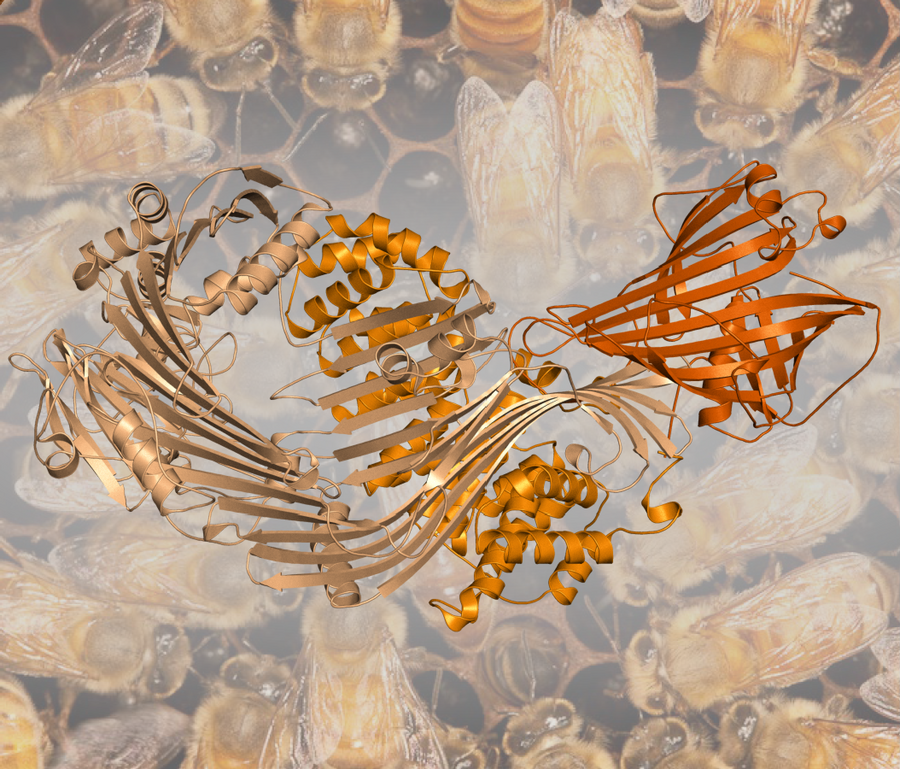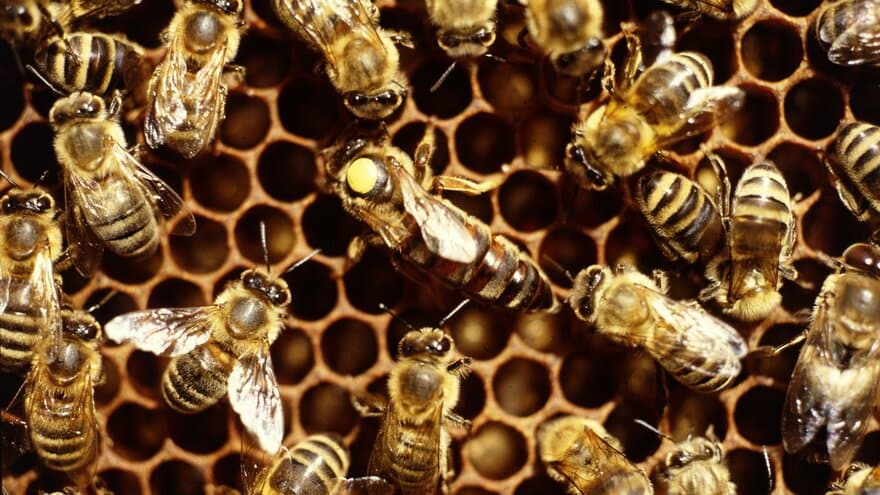In her PhD, Vilde Leipart has obtained a structural model of the protein vitellogenin and used the model to understand how it functions in honey bees. Her results are important to our understanding of the honey bee, and the consequences vitellogenin has for colony health.
Proteins are essential molecular building blocks in living organisms. They come in many shapes and sizes, with a variety of specialized functions. “Proteins are responsible for a vast array of functions, from muscle movement to oxygen transport, immune system defense and gene expression,” PhD candidate Vilde Leipart explains.
In her PhD Leipart has examined the protein vitellogenin in honey bees. Vitellogenin is found in the females of many animal groups in species as diverse as jellyfishes, frogs, and chickens.
The protein provides the major egg yolk protein that is a source of nutrients during early embryo development. It is closely linked to reproduction and health.
Essential to colony health
“In honey bees, the health of the colony is influenced by vitellogenin reserves,” she comments.
The protein levels shift according to bees’ social tasks and affect their life expectancy. Workers with high vitellogenin-levels have higher titers of functional immune cells and better cellular resistance to stress.
Elevating our understanding of the honey bee
Wild and domesticated honey bees are ecologically and economically important social insects; they are efficient pollinators and primary producers of materials like honey and beeswax. Their labor is critical for the agricultural food system, helping flower plants and ensuring the survival of the animals that feed on these plants.
“Piecing together the puzzle of vitellogenin’s importance to honey bees is crucial to our understanding of the species,” Leipart says.

In-depth knowdledge of structure and function
Leipart has obtained a structural model of vitellogenin and used the model to understand how the protein functions.
“The structure of a protein determines how the protein works and what it can do,” she explains.
“I have predicted the protein structure of Vitellogenin by using artificial intelligence and tested the results with a footprint of the protein obtained from honey bees.”
Leipart has also determined that the honey bee protein can bind several zinc ions and used the structure to find their potential locations.
High genetic diversity
She has established a global picture of the genetic diversity of the vitellogenin-gene and outlined the functional consequences of the variation.
“I found genetic variations mapped to individual bees by collecting honey bees from 15 countries, barcoding the samples, and sequencing the complete vitellogenin-gene.”
Her results showed that the variation is remarkably high.
Different regions in the protein, known to have various activities, such as binding lipid molecules or interacting with disease-causing bacteria, show a distinct pattern for variation.
Tip of the iceberg
Leipart’s findings are important for understanding vital biological processes and relevant for the ecological and economically important pollinators.
Her findings indicate that the protein is highly dynamic and could have several active shapes. The mechanism outlined by her hypothesis is probably just the tip of the iceberg in terms of the activities of honey bee vitellogenin.
“I am very happy to report that I successfully completed my goals for the thesis project and was able to develop my own idea on how Vitellogenin behaves - on a molecular level.”
“As a structural biologist, presenting an updated view of the structural landscape of the protein is exciting. This information is useful to many disciplines and can answer questions for years to come about vitellogenin.”
Vilde Leipart defends her thesis “Understanding the structure-function relationship of honey bee Vitellogenin” Friday the 18th of February. Trial lecture and defense are streamed and open to all.
